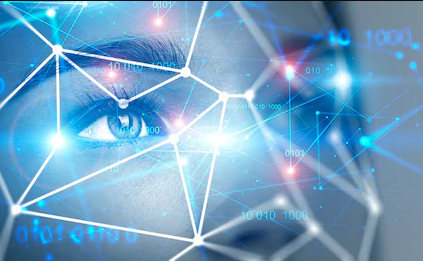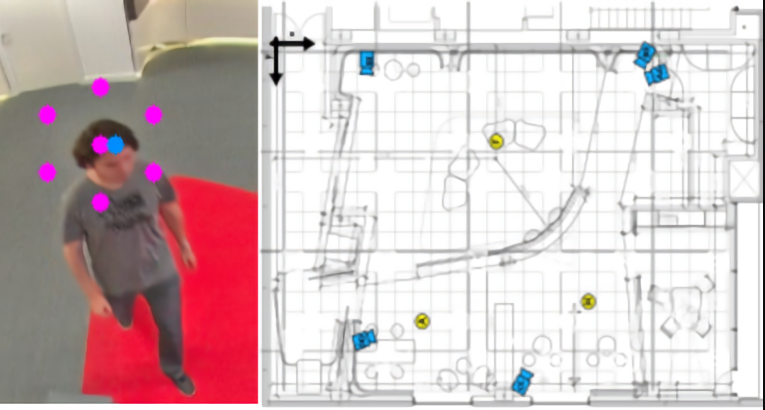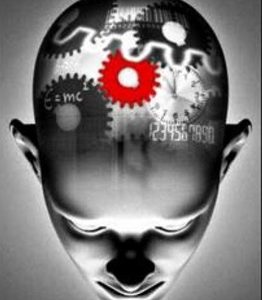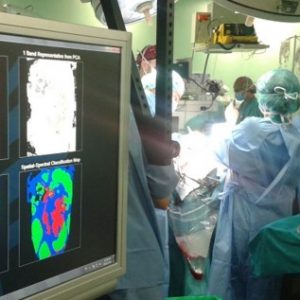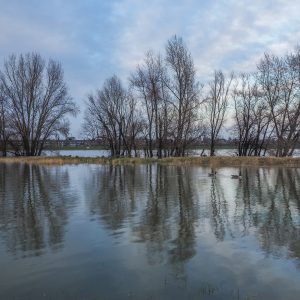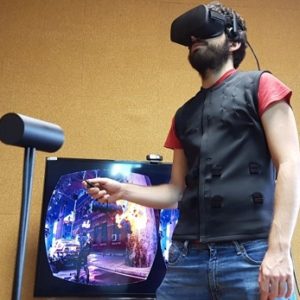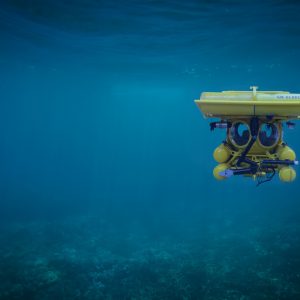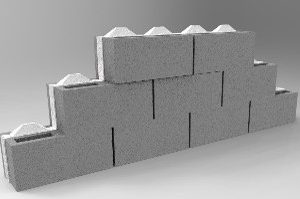Brief description of the solution and the added value it delivers
Indoor location-based services (ILBS) are a growing global market with a promising future. The applications are infinite – human movement analysis, tracking, security, environment interaction, immersion, geofencing, etc. – and can be applied to offices, museums, airports, trade fairs, hospitals, hotels, industry and more. UPM’s Image Processing Group (GTI) has developed a novel indoor positioning technology based on deep learning and artificial vision to detect people using cameras. The positioning process is non-intrusive and, unlike the solutions currently on the market, individuals do not need to carry any kind of device (mobile phones, Bluetooth beacons, etc.). Moreover, the accuracy achieved is greater than with other indoor positioning technologies. Our technology is backed up by patents, scientific studies and projects, such as the ‘Live laboratory demonstrator for the bank branch of the future’ for Grupo Santander, ISBAN and PRODUBAN.
Description of the technological basis
Indoor positioning technology that turns any room into a smart space capable of locating individuals without intrusion, collaboration or human-worn sensors. All of the indoor location technologies currently on the market require the individuals to use a sensor or mobile phone in order to locate them. This technology uses cutting-edge deep learning and computer vision algorithms to provide transparent, non-collaborative and non-intrusive human positioning that is accurate to the centimetre.
The applications are infinite – footfall analysis, tracking, security, spatial interaction, immersion, geofencing, etc. – and can be applied to offices, museums, airports, railways, trade fairs, hospitals, hotels, shopping centres, industry and more.
‘The only indoor positioning technology with no ¿sensor-on-human¿ requirement for movement analysis, tracking, security, environment interaction and so on’
Business needs / application
-
Indoor location-based services (ILBS) have attracted a great deal of attention in recent years, owing to their commercial and social potential. Their applications are endless.
-
Conventional outdoor positioning systems, such as GPS, do not work well indoors, due to the obstacles and walls between rooms. Furthermore, technologies specifically for indoor positioning struggle to achieve high location accuracy (to within a metre).
-
Almost no technology achieves that level of accuracy.
-
-
There is, however, a bigger problem: all of the technologies currently on the market require the use of active sensors. Individuals can only be located and tracked if they are wearing a sensor or carrying a mobile phone and agree to share their data.
-
Fifty-five per cent of people do not agree or strongly disagree with allowing shops to use their data to create an image of them in order to improve the services provided (Annenberg School for Communication).
-
Approximately seven out of ten people do not think it is fair for a shop to monitor their online activity in exchange for free Wi-Fi while they are in the shop (The New York Times).
-
Only 45% of mobile phone users enable Bluetooth on all devices in North America, despite it having one of the highest rates of Bluetooth use in the world (BeaconStat).
-
-
Individuals’ explicit or implicit collaboration is unrealistic in security applications and problematic in other applications that assume individuals always have their sensors / mobile phones on.
-
The above limitations severely restrict the quality and usefulness of the obtained location and tracking data.
-
Only part of the population is willing to be located and tracked: inaccurate and biased statistics.
-
‘All existing indoor positioning technologies require the use of active sensors and the collaboration of the individuals involved in order for them to be located and monitored’
Competitive advantages
-
Any room or space can be converted into a smart space capable of locating individuals and obtaining valuable statistics.
-
Individuals are located in a transparent, non-collaborative and non-intrusive manner, with centimetric accuracy.
-
100% of individuals are monitored.
-
Real and accurate statistics.
-
-
The applications are infinite – human movement analysis, tracking, security, spatial interaction, immersion, geofencing, etc. – and can be applied to offices, museums, airports, railways, trade fairs, hospitals, hotels, shopping centres, industry and more.
-
Simple and profitable to deploy.
-
Savings of up to 80% in locations with existing camera networks.
References
-
UPM’s Image Processing Group (GTI) has more than 35 years’ experience in image processing, computer vision, visual communication and multimedia applications.
-
Extensive participation in national and European projects.
-
Collaboration with major international companies: Airbus, Nokia, Telefónica, Indra, etc.
-
‘Bank branch of the future’ live laboratory demonstrator for Grupo Santander, ISBAN and PRODUBAN.
Industrial protection
-
Patent granted in Spain: ES2657378.
Stage of development
- Concept
- Research
-
Lab prototype
- Industrial prototype
- Production
Contact
Human-Aware Spaces contact
Carlos R. del Blanco, Pablo Carballeira
e:
e:
UPM contact
Innovation and Entrepreneurship Programmes
Technological Innovation Support Centre (CAIT) – UPM
e:


